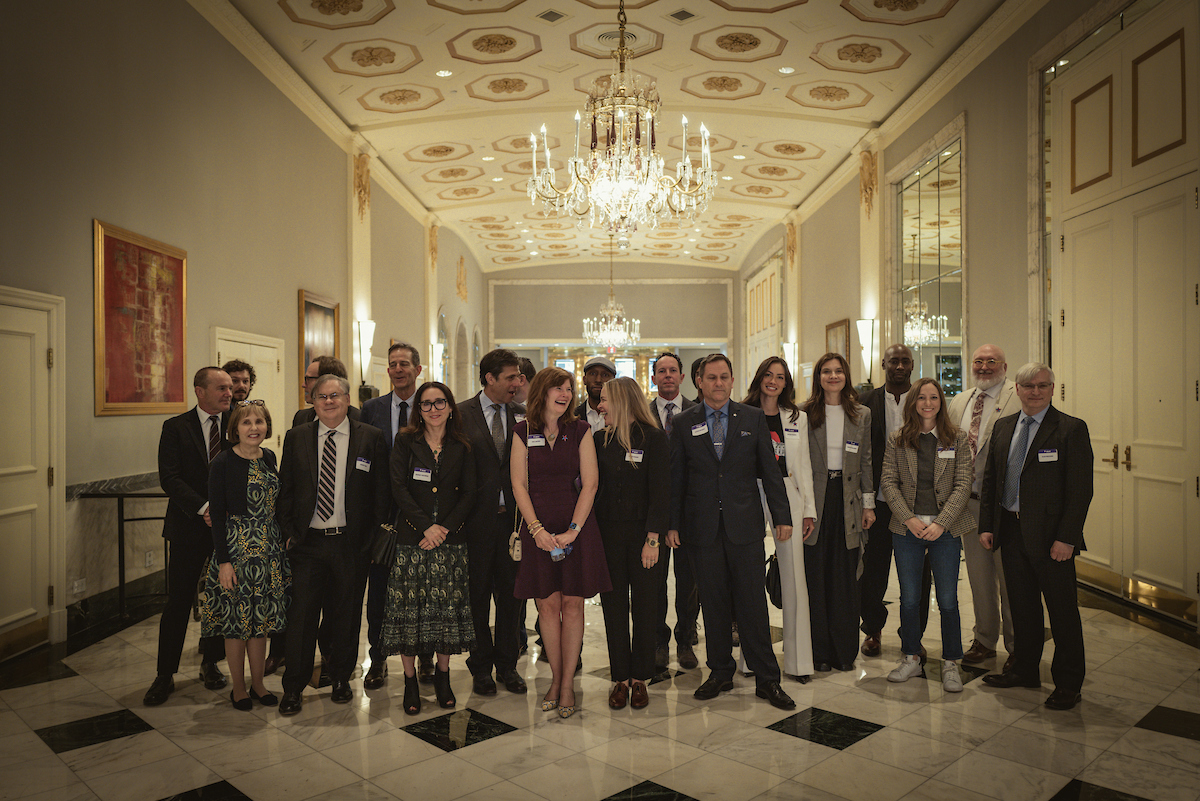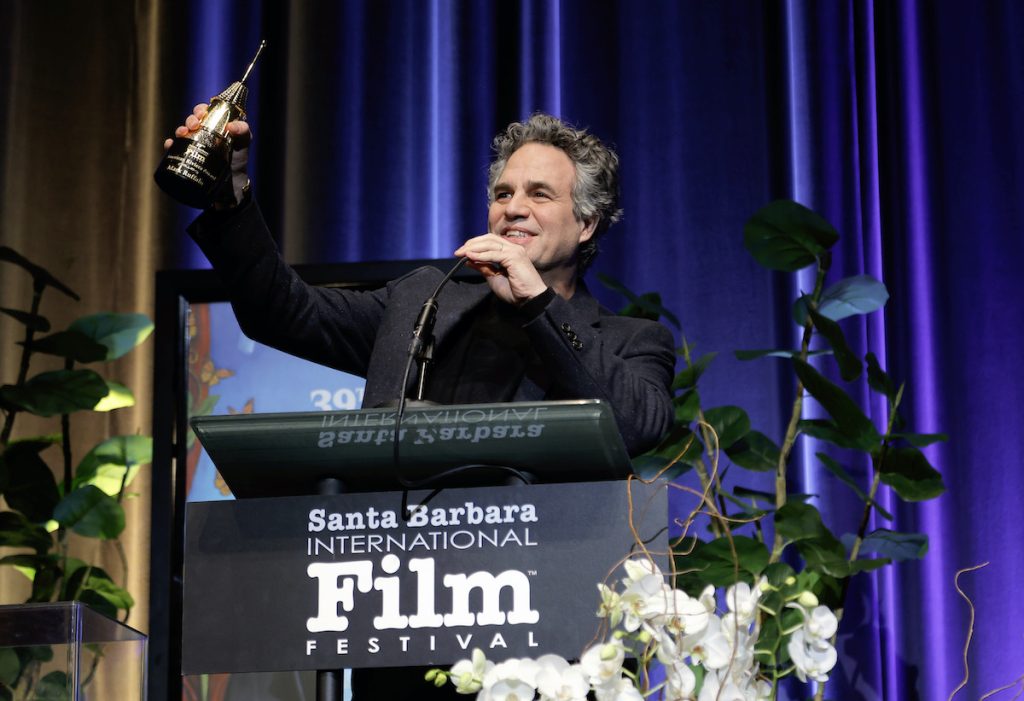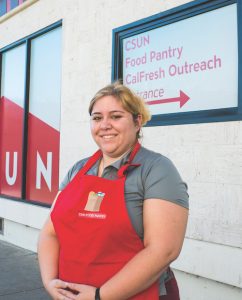Brady United Against Gun Violence

Brady United Against Gun Violence, aka the Brady Center, marks its 50th anniversary since its founding. But the organization that was catalyzed by the assassination attempt against President Reagan – gunshots that permanently disabled his press secretary James Brady – isn’t planning any big celebrations.
Rather, the nonprofit’s efforts continue to be focused on doing whatever they can to unite people from coast to coast, progressives and conservatives of every race, ethnicity and identity, to combat the still-rising epidemic of gun violence.
In the wake of the recent Uvalde and Buffalo mass shootings, they’ve also had a bit of an epiphany in recognizing that effecting change solely through legislation regarding sales is a massive challenge in our particularly polarized times regarding guns. But everyone agrees about gun safety, so why not change the culture surrounding how guns are shown in movies and on TV?
Taking a cue from the effectiveness of a shift in how seat belt use is portrayed on TV – it’s rare nowadays to see a cop jump into a car and speed off without clicking in on camera – as well as successes in curbing drunk driving and smoking on screens, Brady United has developed its Show Gun Safety program. The new effort codifies gun safety principles in conjunction with creators in the film and television industries to model firearm safety on screen.
And it’s working.
“Our first step was gathering a petition with the commitment to show gun safety, and we actually expected to launch that with just a couple of dozen names,” said Renee Davidson, Brady’s Vice President of Communications, who is spearheading the Show Gun Safety program. “But we got a surge. It turns out that people in the industry are really hungry for this. They’re coming to us and we don’t have to make a case or even pitch. We don’t need to tell them why they need to do it. They’re so ready.”
The three-part pledge asks creatives to:
1. Use creativity to model responsible gun ownership and show consequences for reckless gun use, including making a conscious effort to show characters locking their guns safely and making them inaccessible to children.
2. Have at least one conversation during pre-production regarding the way guns will be portrayed on screen and consider alternatives that could be employed without sacrificing narrative integrity.
3. Bearing in mind that guns are now the leading cause of death for children and adolescents, working to limit scenes that feature children and guns.
“Those principles are really realistic and very achievable,” Davidson said. “They’re not about taking guns out of TV and film. It’s not about censorship but being more responsible. I think that’s why it’s been so galvanizing.”
Indeed, it was less than a year ago that Brady organized about two dozen Hollywood actors, directors and showrunners to join a roundtable discussion at the White House on the role the TV and film industry can play in combating the gun violence epidemic. The nonprofit has now also partnered with two of the world’s leading talent agencies in Endeavor and Creative Artists Agency to foster systemic change on gun safety in TV and film.
Among the signers is actor Mark Ruffalo, who was recently honored with SBIFF’s American Riviera Award at the Arlington and is currently nominated for an Oscar for his role in Poor Things.

“We’re thrilled that so many people who are influential in the industry really want to embrace these ideas because they want to feel like they’re helping the movement against gun violence and helping show responsible depictions that’ll keep our community safe,” Davidson said.
Brady United is expanding on the Show Gun Safety principles to work directly with showrunners, writers, and filmmakers to provide ways to portray safe handling of guns in their movies and TV shows, whether for animation that might run on Cartoon Network, or on police procedurals and thrillers.
“It’s about how they can insert that glimmer of maybe a gun safe, locking away the firearms rather than tossing them on the table,” Davidson said. “Maybe don’t show guns so prominently in movie posters and marketing efforts. Again, it’s not about getting rid of the guns, but about being thoughtful about the marketing. Is it necessary? How are we being intentional? All of it matters because guns are so pervasive in our cultural narratives.”
As an adjunct to the Show Gun Safety principles is a push to have Hollywood more realistically portray what happens when someone does get shot. Ever since Hollywood began filming action movies, it’s been a trope that a bullet that doesn’t hit the head or chest basically barely leaves a scratch, the victim shrugging it off and continuing the fight.
Back in the 1990s, there were two films that tried to accurately portray what happens when someone gets shot. In Three Kings, David O. Russell showed in graphic, gruesome detail what happens when a bullet penetrates the body, both filming a slug passing through an actual cadaver and employing animation to further indicate the damage. In Lawrence Kasdan’s Grand Canyon, a robber fires a bullet into Steve Martin’s leg, and we see him go into total shock, the way people actually do when their bodies suffers such extreme trauma. He even pisses himself with the pain.
But even Martin’s character – a filmmaker famed for directing action films – goes right back to what he was doing before even before he’s fully healed.
Dr. Joseph V. Sakran – a gunshot victim as a teen who is now Brady’s Board Chair and Chief Medical Officer and treats gunshot victims at John Hopkins Hospital – leads the organization’s efforts to lift the voices of healthcare professionals in the gun violence prevention movement.
“He’s advising and consulting as well because he understands that we need portrayals that actually show you don’t just get up and continue to run after getting shot,” Davidson said. “More realistic portrayals that show the real severity can also be part of the culture change.”
To be sure, Brady isn’t abandoning its legislative efforts, employing research, and lobbying to enhance and upgrade protections that were codified in the long sought-after Brady Bill. But as Davidson said, culture change is contagious.
Both philanthropists and professionals in the entertainment industry should feel free to contact Davidson directly at rdavidson@bradyunited.org
Brady United Against Gun Violence
www.bradyunited.com
(202) 370-8100
Brady | United Against Gun Violence
Donate now!www.bradyunited.org
(202) 352-2434
Chief Development and Engagement Officer: Liz Dunning
Mission
We’re uniting people from coast to coast, liberal and conservative, young and old, fed up and fired up, to end gun violence.
Begin to Build a Relationship
We know you care about where your money goes and how it is used. Connect with this organization’s leadership in order to begin to build this important relationship. Your email will be sent directly to this organization’s Director of Development and/or Executive Director.
I’m proud to support Brady’s groundbreaking Show Gun Safety campaign to be more intentional about how guns are portrayed on screen. We in the creative community must do our part to create a safer America free of gun violence — and that change can start in the characters we create and the stories we tell.
Be the Generation to End Gun Violence
Guns are the #1 killer of children in this country, an unacceptable reality. As they have done for over 40 years, Brady: United Against Gun Violence works to change the laws, change the industry, and change the culture around guns in the United States. Brady’s “Show Gun Safety” campaign and award-winning “End Family Fire” program save lives each and every day, but the scale of the impact depends on you.
With an additional $3 million dollars, Brady could increase their impact exponentially. For example, Brady could conduct a marketing campaign aimed at new gun owners to increase safe gun storage to reduce suicide, school shootings, and domestic violence. Eight children a day are killed or injured due to an unsecured gun in the home.
You can help end this. Donate today and free America from gun violence.
Key Supporters
BRADY CENTER 501(C)(3)
Dr. Joseph Sakran (Board Chair)
Kristin Brown (President)
Tony Porter (Treasurer)
Roberto Gonzalez (Secretary)
Gene Bernstein
Thomas Dixon
Roberto Gonzalez
Ricki Tigert Helfer
Lynn McMahon
Martina Leinz
Joshua Solomon
Helen Torelli
Joe Trippi
Kath Tsakalakis
David Wah
